THE AURICLE
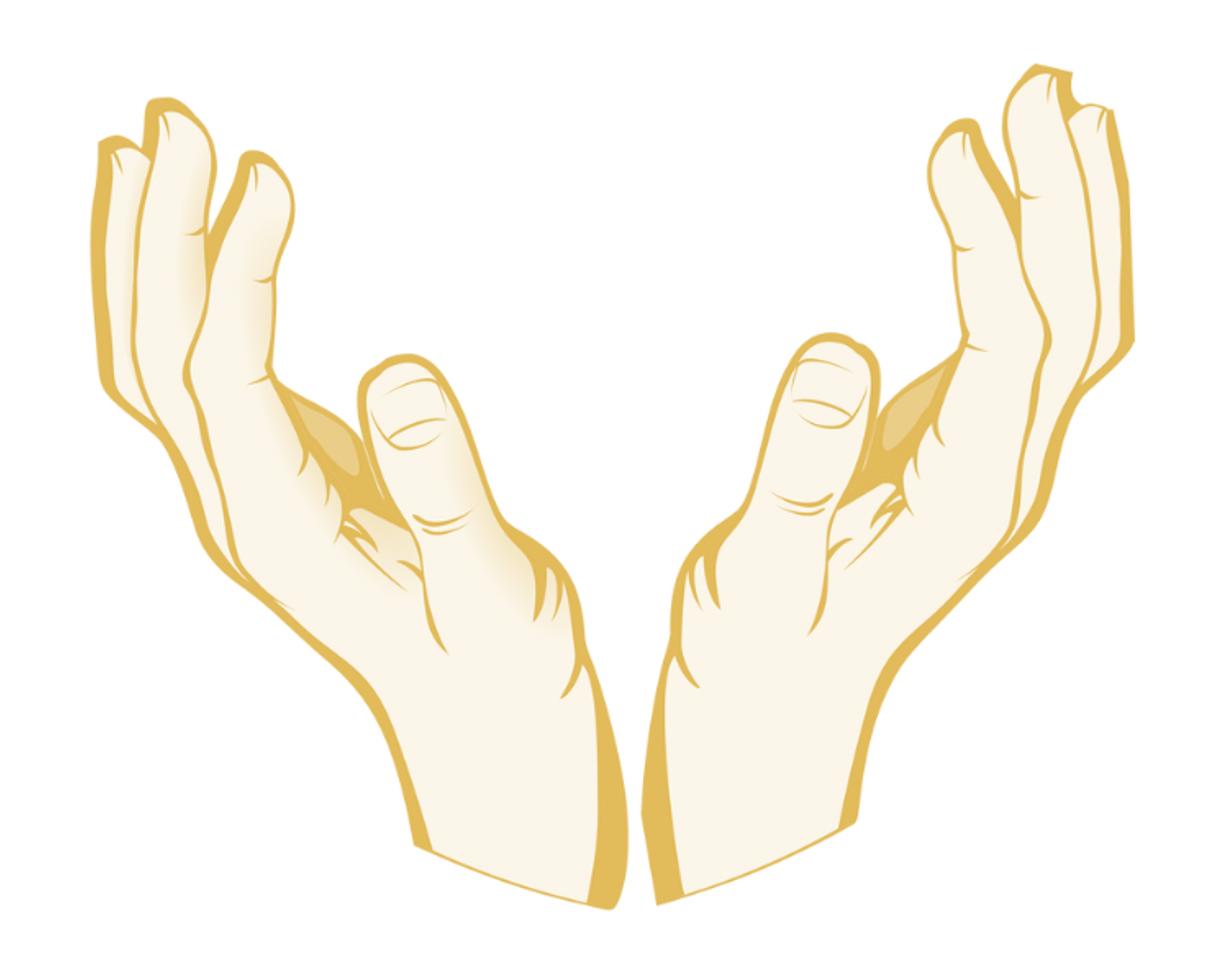


RESULTS: The Auricle x MIPS
Creative Writing winners:
1st Place: "Stardust" by Natalie Evans
Writing and Visual Art Competition
2nd Place: "I am Everyone" by Khue Le
3rd Place: "Never Let Them Fall" by Tessa Quinlan
Visual Art winners:
1st Place: "Reflection" by Anna Noe
2nd Place: "Retro Funk" by Charlotte Raberger
3rd Place: "Empty Celebration" by Lois Segund Beloved
Humans of Medicine Ruby Doherty and Jess McKie:
Spotlight: Victoria's Mental Health System, by Shefani Perera
Research Corner: The CHEK2 gene and cancers, by Hasna Kazi
and Wellbeing: a poem by Virginia Su
25
29
Dear readers,
As we approach the end of the academic year, exams and assessments dominate the headspace of every med student We hope the penultimate edition of The Auricle for 2022 reminds you of the importance of a balanced and passion driven lifestyle, showcasing the diverse talents of many med students.
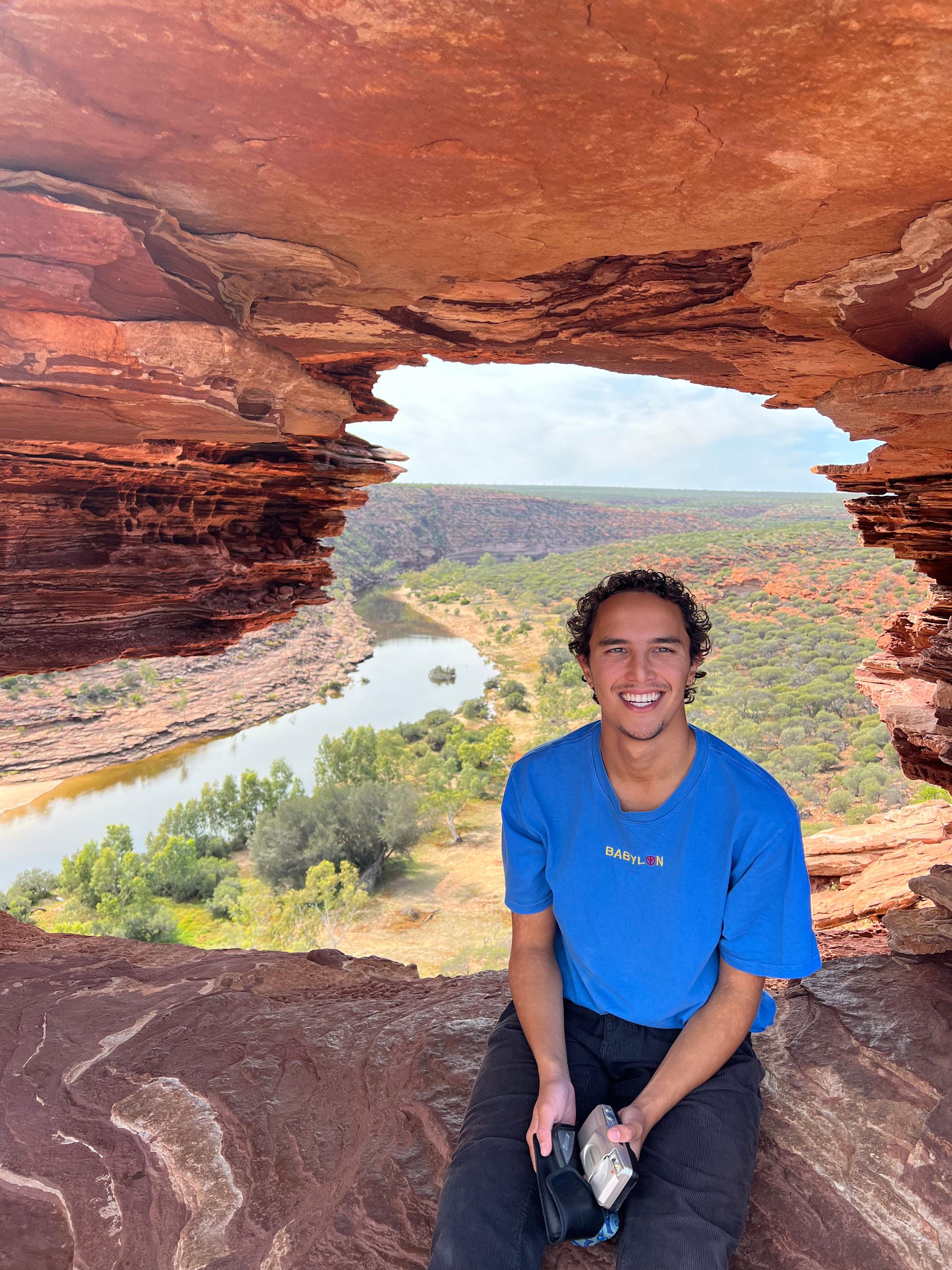
Throughout this edition you will see the winners of The Auricle x MIPS Creative Writing and Visual Art Contest. Some incredible pieces are featured here by our talented peers who have taken time away from their studies to showcase their creativity. We hope you are able to find time to do the same at this chaotic time of year
Within this edition you will also find 'Humans of Medicine' profiling the two incredible final year students, Ruby Doherty and Jess McKie, who directed Med Revue, the 'InMEDibles'. Some fascinating research from MRSS committee member Hasna Kazi will definitely get you thinking. Enjoy a poem by Community and Wellbeing's Virginia Su, and a thought provoking Spotlight on Victoria's mental health system by PsySOM's Shefani Perera.
As always it is a privilege to share the pieces of work created by YOU in this magazine, so please don't hesitate to contact us if you have anything to share
Lachlan Coman and Jordi Shahab
Lachlan Coman is currently completing a Master of Public Health Jordi Shahab is undertaking a BMedSc (Hons) year1st Place:
2nd Place:
3rd Place:
1st Place:
2nd Place:
3rd Place:
Natalie Evans, "Stardust"
Khue Le, "I am Everyone"
Tessa Quinlan, "Never Let Them Fall"
William Upjohn, "The Caretaker"
Zoe Weimar, "Quieter Now"
Laura Smith, "Expiration Date"
RESULTS VISUAL ART
Anna Noe, "Reflection"
Charlotte Raberger, "Retro Funk"
Lois Segun-Beloved, "Empty Celebration"
Fathima Ijaza Irzan, "Metamorphosis: a neurological perspective"
Christopher Photopoulos, "Tides of Change"
It is 8am on a Thursday morning and in front of me lies a bag on a metal table. I am nineteen years old and never even been to a funeral. The room has very good ventilation but an unsettling odour still lingers and there are small puddles on the floor. I am standing there with three other medical students my anatomy group About ten more groups in the room stand before their own dark blue bags. We are told to feel the bag, to orientate ourselves with the stiffness beneath. We do so, patting at the bag gingerly with our gloved hands. Then it comes time to unzip.
Long ago, another’s hands hover tentatively over a similar body except this body is that of an executed criminal, his soul left back at the gallows where his breath disappeared into silence The person crouching over the already decaying corpse is considered a criminal for this act of bodily desecration. This is in Ancient Greece in the second century BC, where medical dissection is recognised to have begun.(1) Those who wished to access bodies for dissection were forced to obtain them via illegal means such as grave robbing and body snatching.(2) A change in attitude towards dissection began in the third century BC, when royal patronage allowed dissection in Alexandria, Greece, in order to establish it as a ‘glittering centre of literary and scientific learning’.(1) Prior to this, official exploration of the human body was superficial both literally and metaphorically.
However, this small sliver of discovery was brief, and what followed was a retreat into the old ideas and beliefs surrounding dissection Religious taboos and societal notions restricted scientific progress until there was a ‘revival’ in Medieval Italy at the outset of the fourteenth century.(1) At this time, religious authorities gave permission for human dissection conducted within university premises, and this occurred once or twice a year using executed prisoners.(3) In the fifteenth century, many physicians obtained bodies for dissection by unethically convincing families that their loved one required a post mortem, which in most cases was untrue.(4)
It is not only medicine that has profited from the innards of man being explored. The artistic sphere was also responsible for pilfering the dead to further the ‘portrayal of [the] human figure’ (1) Leonardo Da Vinci, Michelangelo, and Baccio Bandinelli were all practiced in stripping back the flesh of man's clockwork and uncovering what makes us tick. With such a dire demand yet limited supply of cadavers, even those still living felt under threat of being murdered for their bodies. Although individuals living in poverty were the main targets, there is a rumour that a Spanish aristocrat was set upon and dissected whilst his heart was still beating (1)
Thus, human dissection has evolved from being a criminal act bestowed upon criminals, to a consequence of poverty, to a process of informed consent and respect.
§
Prior to entering medicine, death had been imagined as a stillness, an ending with closed lids, distant weeping, church bells, a tableau of black In the movies, death transpired as a mise en scène of violence with gunshot or stab wounds, necks bent at bizarre angles, and scarlet pools spreading over wet asphalt. There had never been a time when the idea of death conjured up forceps, surgical scissors, sinks, gloves and slippery floors. But there we were, tentatively hovered around a cadaver, hands within white or blue gloves, and a tray of surgical instruments gripped nervously Now we’re unzipping the bag and so is everybody else I start seeing glimpses of the bodies and I wonder if anyone will faint and if so, that person better not be me.
Our donor was a man. His face was covered. Nausea needled my stomach because this was not how cadavers were supposed to look Didn’t cadavers look like the preserved sections in glass we had studied in specimen class? Why did these bodies appear as if they had simply fallen asleep? However, after the initial shock, we became wholly invested in writing our dissection plan on the whiteboard and beginning the hunt for the elusive brachial plexus. After one hour we were all at the sinks, turning the taps to let loose streams of water which cascaded down the long metal basins The sinks reminded me of the troughs that fed farm animals, and the crush of students washing their hands made me feel like I was part of a medical student herd.
Twice a week we shrugged on lab coats, donned gloves, fit blades into scalpels, and collected the scissors and forceps on the tray We were practiced at writing on the whiteboard the list of tasks for the day’s dissection, unzipping the body bag, receiving a handover from the previous group about what they had accomplished, and beginning.
We also became adept at the unspoken things, like learning to hold your breath whilst opening the body bag, eating lunch even if you are not hungry beforehand, and remembering to wear shoes that you do not mind touching the fluid on the floor. At some time, at some moment standing amongst both the living and the dead had changed from ordeal to routine.
One member of my anatomy group named our donor Sir Gregory This christening into the afterlife was adopted by many other groups and for us, the name stuck from then on We were very lucky to have Sir Gregory as he possessed clear anatomy and lacked any confusing anatomical variations. One day, an echo of his life unexpectedly emerged when we stumbled upon a tattoo on his arm of a name. We could only guess at what this name might have meant to Sir Gregory, a secret locked within his earthly vault
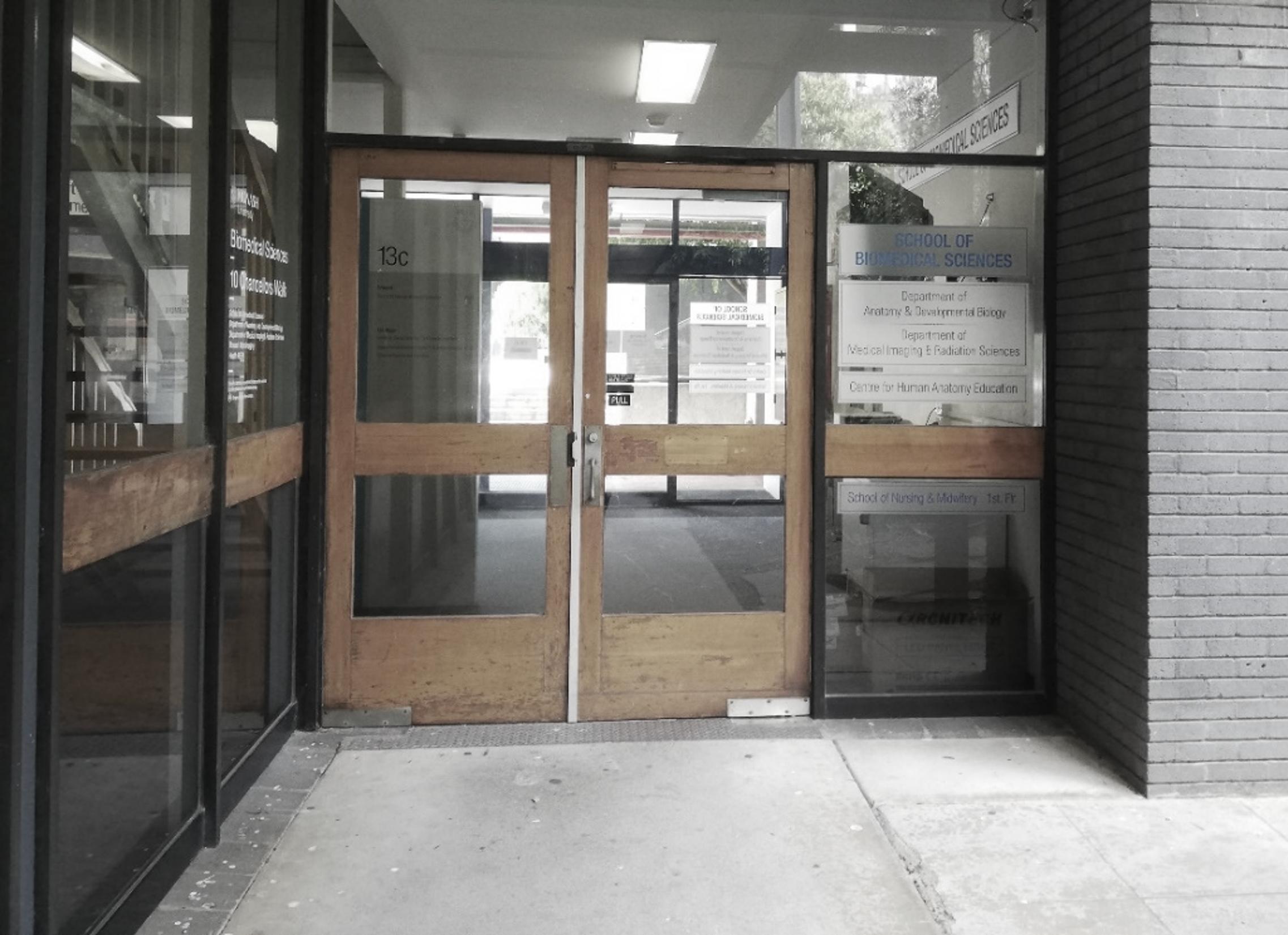 Entrance to the old anatomy building and dissection laboratory (photograph by Natalie Evans)
Entrance to the old anatomy building and dissection laboratory (photograph by Natalie Evans)
Survival is the human body’s most gifted architect. Every hollow, chamber, space, layer of muscle, skin or outline of bone has been expertly crafted to imbue the greatest working efficiency and survival edge Gazing down at this accomplishment of biological machinery, I could only imagine the sight if blood coursed within the vessels and the body performed its triumph of animation. However, with this complex feat of engineering comes a very weighty caveat with such intricacy comes great capacity for error. This sentiment is true for many themes of life but is equally and most pertinently true in the physiological nature of life itself In this way, the benefits of dissection became very clear to me very quickly The secrets of the human body were right before our eyes presented in a form which a textbook could never hope to reproduce. Most startling was the discovery that the human body does not possess colour coding and that as each person differs mentally and physically, anatomically the variation can be endless.
A shortcut in the rush to get to anatomy (photograph by Natalie Evans)
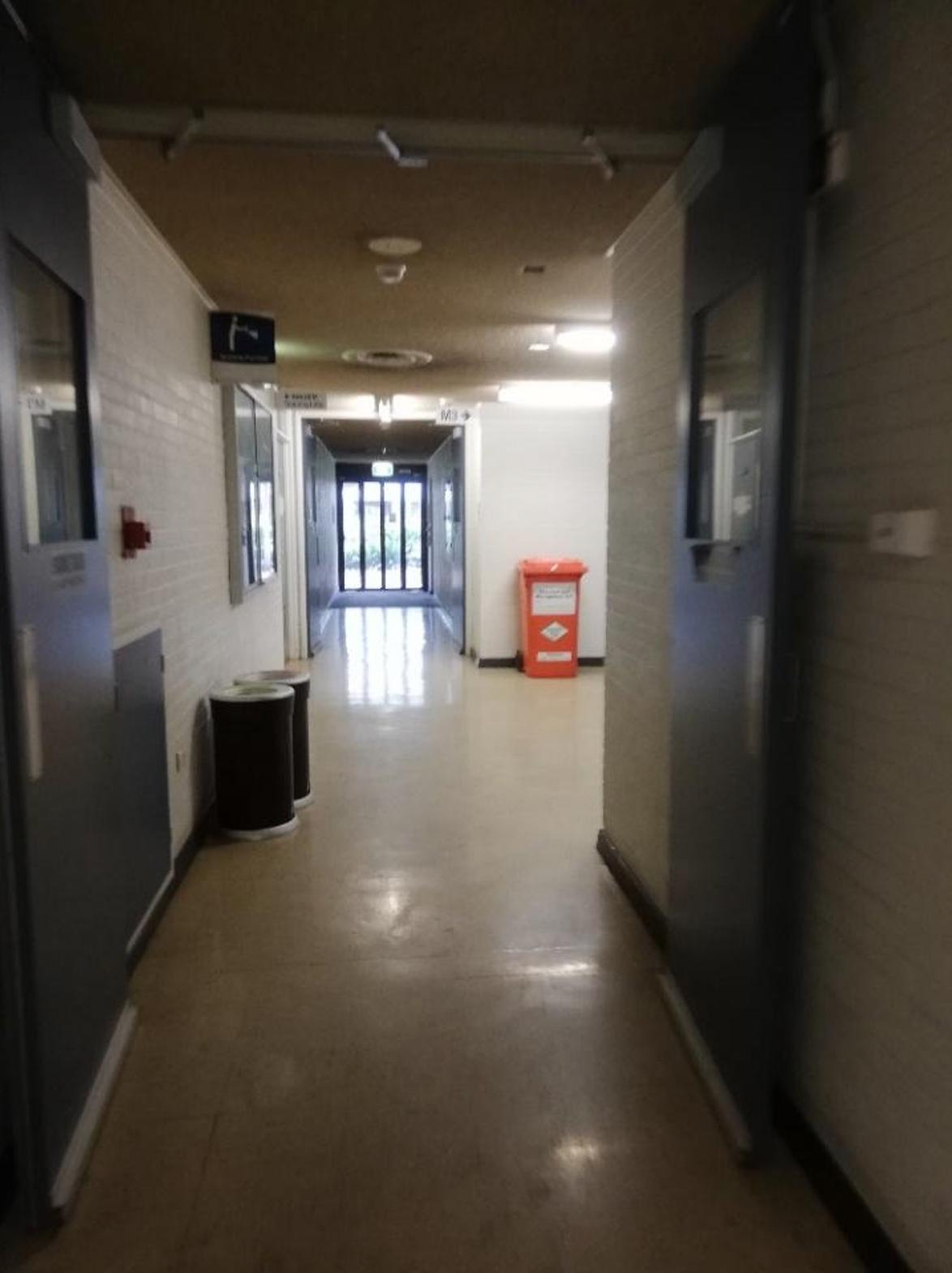
Over time, my anatomy group began to develop the ability to differentiate between arteries, nerves and veins based on appearance and feel. To hold an organ, feel the elastic bounce of an artery, fashion a window in the atrium of the heart then view the valves within these experiences are the capstone of dissection. It was in dissection where I realised that “heartstrings’’ are a real structure. Anatomically, your chordae tendinae, colloquially known as heart strings, are connective tissue cords that connect small papillary muscles to the valves in the heart. These small strings anchor your valves whilst the heart pumps blood. Thus, if something “pulls at your heartstrings,’’ I imagine some force pulling back on these strings like reins on a horse, causing the heart to buck under the strain of such emotion
There is also an importance to dissection that is separate to the anatomy. To physically cut another human being does not come naturally so as a student you learn how to cut with compassion A new level of empathy develops to ensure you are both respectful to the donor and to minimise damaging a structure that might be required later Simultaneously, the student must be confident when attempting the dissection, as if they are too anxious about each tiny incision, nothing gets done and precious time is wasted. Although it seems unkind to alter a person by such physical means, the purpose of the whole exercise is to learn as much as possible and ensure the donor’s contribution enhances your understanding Some of the most important concepts our group learned were from making mistakes mistakes like confusing the paths of major arteries which are better to be made on someone who no longer requires their arteries than in clinical practice.
Our tutor described a case where a woman had an operation and was severely ill during her recovery Once this was investigated it was discovered that both her ureters had been cut during the procedure, thus her body had been unable to excrete urine. It is hard enough identifying objects in a still body, let alone one that is aflush with life, however errors like these must be mitigated at all costs through rigorous training and educational experiences such as dissection
§
One day we moved to the new anatomy building. Compared to our old building it was gargantuan, with a green speckled façade that resembled a fungus. Inside was a lot of empty space punctuated by black stairs that slashed down the middle like unimpressed eyebrows.
Seeing the donors in this new space I found I was glad they inhabited brighter and sleeker quarters. It was as if they too had been given a gift and the snowy whiteness of it all imparted a heaven like quality. There were also screens placed around the room, on which our tutors could illustrate a structure from a specific donor to the whole class. In a sense with the bright lights and screens the donors were metaphorical film stars in a limbo universe.
§
Suddenly it was the last day with the donors who had helped us in our medical journey for two semesters (semester two of first year and semester one of second year). When I began dissection in first year, it was with a male donor who had been claimed by another group this year This semester I had a new anatomy group and a female donor who had helped us to understand female anatomy. Our tutor told us to focus our dissection on the pelvic area but we were also free to explore any other area so far dissected, as it would be our last chance to do so.
 The new Biomedical Learning and Teaching building (photograph by Natalie Evans)
The new Biomedical Learning and Teaching building (photograph by Natalie Evans)
A timer ticked down to zero. At zero everyone returned to their donor and our anatomy lecturer conducted a minute’s silence. As silence descended we all shared a moment with the donors silently thanking them for their generosity and the privilege they had honoured us with. I found myself imagining my donor’s life projecting a film in my mind of someone running in the sunshine a kindly voice a smile.
The minute was up. Our anatomy lecturer walked down the rows announcing cause of death.
As she read through the list I kept in mind Sir Gregory from last semester and wondered again which table he was this year. The lecturer arrived at our table. Cause of death:
Cancer was the prominent grim reaper in the room. It is the great erratum of biology, our own cells turning rogue and militant against the life that bore them, a phenomenon that to this day we have not escaped from We were very much surprised to learn that one of the donors was over one hundred years old, which generated a small crowd around his table After discovering the cause of death, we were given a small window of time to view each other’s donors again, now with discerning eyes.
It was time to bid our donor goodbye We made sure to replace her organs to their rightful place as best we could I lowered her thoracic cage and moved the two halves of her pelvis back as close as possible to her abdomen. Then we zipped up the body bag.
With a new semester comes a new season, new tutorials, and new bodies. It is semester two of year two and a new workbook is provided in our first anatomy class This time my anatomy group congregates around a different table. The man stretched before us will lend us his head and neck, and the Year Ones will simultaneously dissect the upper limb region. I realised that the other cadavers we had dissected last semester had probably been cremated by now, and this realisation made me feel as if the donors had died for a second time.
There is a 1941 film called A Woman’s Face, which stars Joan Crawford in the titular role. It revolves around Anna Holm, a facially disfigured woman who spends her life punishing the world that injured her By chance, her path crosses with that of a doctor who specialises in restoring normal appearance to victims of facial trauma. The doctor offers to help her, pro gratis, and once she agrees the film falls away neatly into two halves before and after the operation that changes Anna’s life. There is one line in the film that is quite magnificent. When the day comes for the bandages to come off Anna’s face no one knows whether the operation has been successful or whether her features will have been destroyed forever The doctor says to Anna, ‘If this operation’s a success I’ve created a monster ’ There’s a beat as he flicks on the lamp, ‘ a beautiful face and no heart’.
The disconnect between face and soul is a concept often explored in literature, film and philosophy We have no control over the face we are born with, and our minds and behaviours come from a deeper place yet the face has such power to elude and seduce However, all that beauty or distinctiveness is the equivalent of the thin crust upon a planet’s surface.
In A Woman’s Face, it unfolds that although Anna nearly crumbles into the monster she has always called herself she ultimately chooses the path of one with a heart Thus in the end, both face and soul are united. All of this provokes me to wonder at how our faces affect us and how I will feel when removing someone else’s face. It is curious to note that the only part of the donor that is separately covered inside of the body bag is the face. For some reason, the face is deemed most private, and most revealing
§
As I walk to the table of gloves I survey the room and the small but critical change in the presentation of the cadavers The faces of the donors are visible Standing around the table, I see that the skin of the lower right half of our donor’s face has been cut and can be retracted if need be. I had sometimes wondered, before my medical studies, what the face of somebody who had died looked like. Would their eyelids slowly shut and fall like a curtain over the eyes as life’s performance ends? The eyes are ‘the window of [the] soul,’ as described by Shakespeare who himself drew inspiration from the biblical phrase, ‘the eye is the lamp of the body ' Would the departed individual appear calm, tranquil, or simply frozen, trapped in an expression as the winds of life changed? Now I can say that with death,
the face assumes no ubiquitous, ‘deathlike’ expression. The face simply remains in a single pose that differs between donors, with eyelids that may be open or closed, and mouths that may also be open or closed
To begin our dissection, we refer to the other side of the face, and to the depths of previous cuts and then the belly of the scalpel contacts the skin and someone makes an incision. The incision ends up being a straight line parallel to the nose, one long cut made up of many hesitant cuts interspersed by referring to the other side and discussion like
‘But what’s that thing there?’
‘Should we cut it?’
‘Scissors are on the tray if you need?’
‘Could it be a nerve?’
‘Am I on the right layer?’
‘Maybe a bit deeper.’
‘You did a great job.’
We all stare at the fifteen centimetre incision that took half the class to make Looking around, the faces on other tables were in various states of removal In life, some people are blessed with faces of great beauty and symmetry, others possess facial features that are striking in other ways. There are faces that tell stories of intelligence, disappointment, happiness, and regret. However, in the end, at the finale of existence, everyone possesses the same ultrastructure beneath That dimple that emerged as you smiled, the soft blush that dappled your collagenous cheeks, the wrinkling that creases the thin papery skin they all diminish once you wade into the pond of death. They hover as in a dream, just above the rippling surface of such a pond.
Our final day of anatomy arrived abruptly and without warning Everyone was taking their lab coats out of plastic bags and donning them quickly casting everything else aside. It felt strange to wear the starchy white coat outside of the laboratory, which in normal circumstances was against the rules.
Outside in the sunlight was a photographer as well as all the anatomy tutors and lecturers
My anatomy group linked arms as we burrowed our way through the crowd to stand on one of the tiered stairs together. As the light flashed from the camera, capturing all our cohort and the tutors together, another image entered my mind I saw the photographs of medical students which were printed on the wall of the anatomy imaging room, the photographs my eyes had often wandered over to whilst they were meant to be observing radiological imaging. I remembered when I found the first woman in the photographs and then a few more appeared, and more and more. I had also found myself looking at the names below the photographs and wondering where those students were now As I stood on those steps, I wondered where our photograph would end up I wondered if one day somebody else would stare at the grainy image of our faces and imagine who we had been.
§
Throughout my astonishing journey in dissection, I had direct experience with three donors. The first, Sir Gregory, who assisted with upper limb, lower limb and the thorax The second, a female donor Miss Marple, who assisted us with the thorax, abdomen and pelvis. Our final donor was another male, Obi Wan, who bequeathed us his head and neck. When we left each day to go home, they remained. When we went to the movies or the library or to parties they lay patiently for us to return. I used to be afraid of death, I think I probably still am but I realise now it is the caveat that comes with life I have seen mortality with my own eyes, and I have seen that it is the ultimate equaliser, at least in the present day. Reflecting on dissection class, eternity, and the donors who were our first patients, I have often found this quote from the 1997 film Gattaca rippling up from my mind:
‘They say every atom in our bodies was once part of a star Maybe [they’re] not leaving Maybe [they’re] going home’.
References:
1. Ghosh SK. Human cadaveric dissection: a historical account from ancient Greece to the modern era. Anat Cell Biol. 2015;48(3):153 69.
2. Garment A, Lederer S, Rogers N, Boult L. Let the dead teach the living: the rise of body bequeathal in 20th century America. Acad Med. 2007;82(10):1000 5.
3. Hildebrandt S. Capital punishment and anatomy: history and ethics of an ongoing association. Clin Anat. 2008;21(1):5 14.
4. Park K. The criminal and the saintly body: autopsy and dissection in Renaissance Italy. Renaiss Q. 1994;47(1):1 33.
Good morning! My name is. I’m a medical student.
I’m the daughter of parents who called me downstairs to greet guests I didn’t know and reminded me to speak louder when I said my hellos, so to you, my care and respect comes freshly baked as a “good morning”. I am the girl whom my mum shows her love to through a plate of sliced apples and washed grapes when I’m studying, through a thermos of tea left out for a few minutes so it’s the right temperature to not burn my tongue and through the almost sickeningly sweet condensed milk with toast she makes when I’m sick So I am careful to pull the curtains close when it’s time to examine you. I tuck in the covers after pressing your shins for pitting oedema. As I talk, I am righting the chair, pushing the glass of water closer to the table centre, moving your bag into an accessible spot. I don’t want you to trip.
I’m an immigrant kid who in Prep, drew lines and hats and moustaches on their letters in class because the alphabet was supposed to have accents. On Footy Day at school, I’m the kid who repeated the mysterious word, “Collingwood”, to anyone who asked what football team I barracked for and had a boy ask me why, if so, I was wearing purple, orange and pink stripes There are more football teams, I said in embarrassment So I take extra care to speak slowly and gesture wildly, opening and closing my palms to indicate a beating heart, when I know English is not your first language. In my head, I am running experiments on ways to best explain congestive heart failure to you.
I’m a university student who spent two fifths of their course at home, nostalgic for dreams of studying at libraries and practising auscultation on real people. I’m the blundering person on the team who stumbles on anatomy questions because the anatomy I studied had been colour coded with red arteries and blue veins. Being in a pandemic means loneliness has visited me. It also means I listen hard and carefully when you tell me your story and I try to know you as you were before you came here The grandfather who spent more than half his life on a boat, the neighbour who walked her little dog to collect the mail, the engineer who built some of the protocols for the equipment I now see in hospitals.
Having a medical condition can be lonely. I didn’t want you to feel trapped in your existence as a patient.
And if you are resigned to the long waiting list and the medication expenses, if you endure pain by sheer will and hasten to get out of hospital so you can start working again to provide for your two daughters, I am reminded of my dad. My dad and his calloused hands. My dad whose working hours were dictated by the ending of the Sun’s rays. I am the older sister who had memorised chip packets in order of their monetary value so I could buy the cheapest one I’m the 10 year old who grew up defining her financial status by the snacks she couldn’t afford. So I recognise, somewhat, your hesitancy to travel when petrol prices are high, your helplessness when the doctor says you need to attend more check ups, the determination to overcome this by your resolute jaw and the quiet concentration as you face the window
When I get home, I will think back to this moment and be angered by the ways spaces have been designed to keep you and countless others out. How, sometimes, it must feel like health is for everyone, except these spaces have told you that you are not everyone.
I am all the experiences leading up to this interaction I am everyone I have encountered and so, I am the medical student who went into medicine with hopes of redesigning these spaces. Hoping that the next you I meet and all the yous after will access health more easily both in and out of hospital.
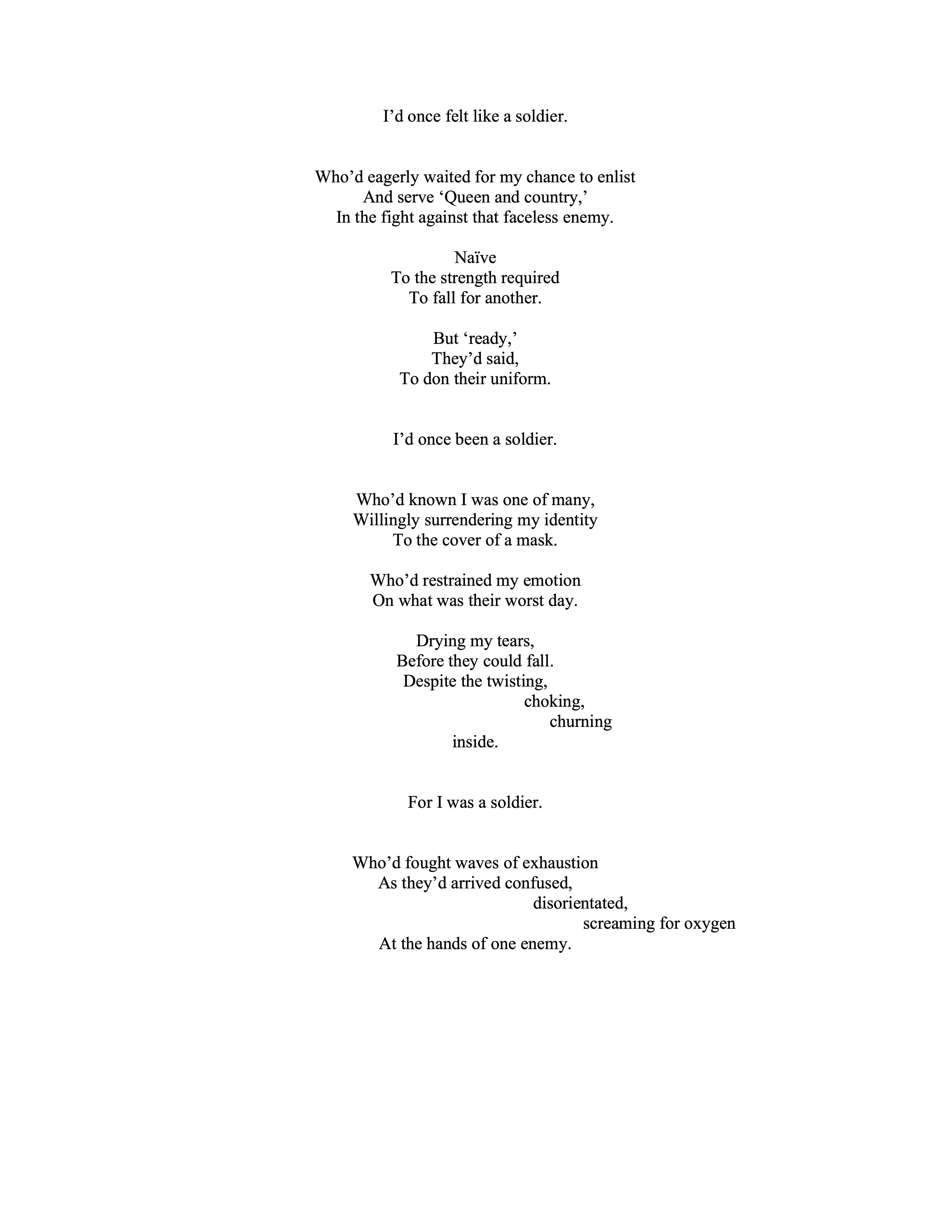
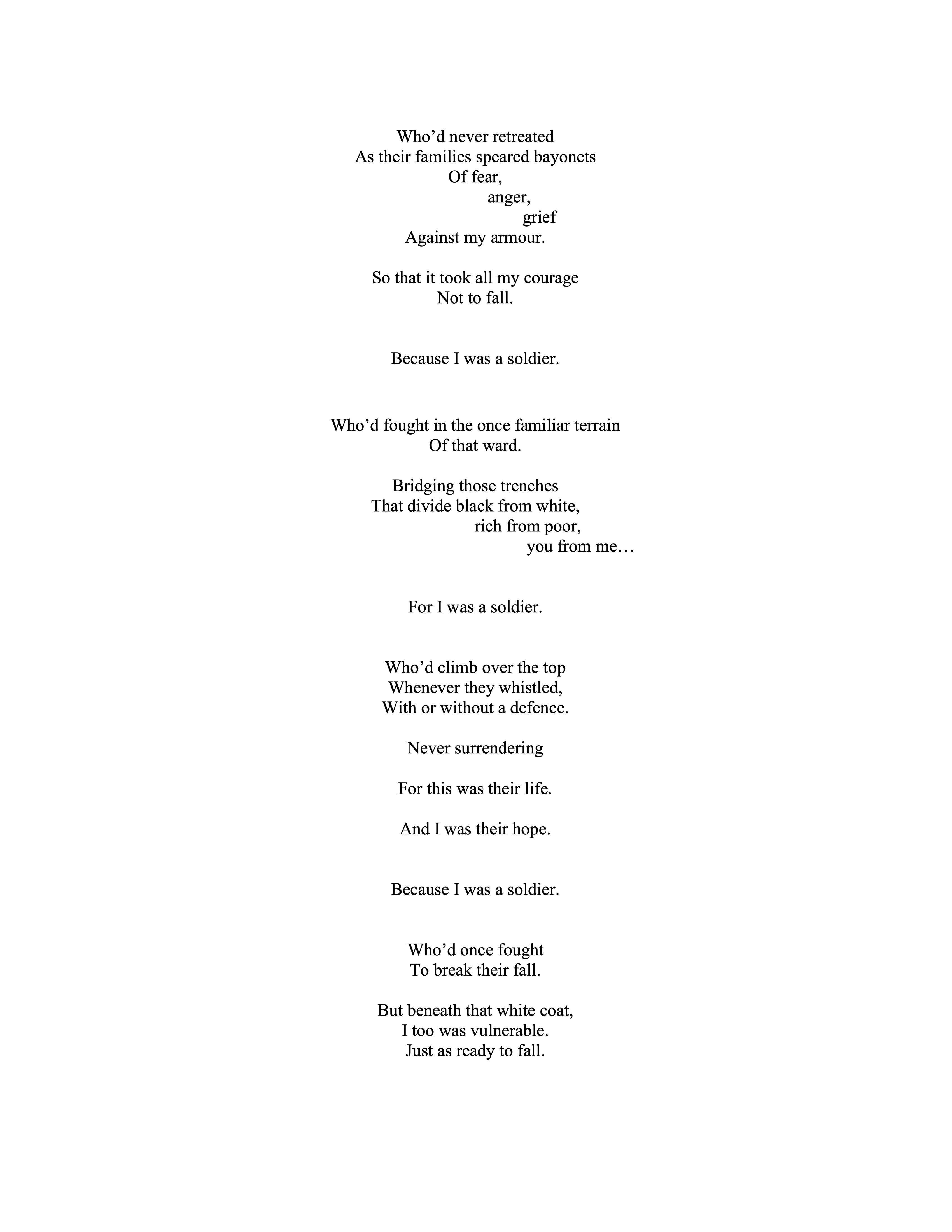
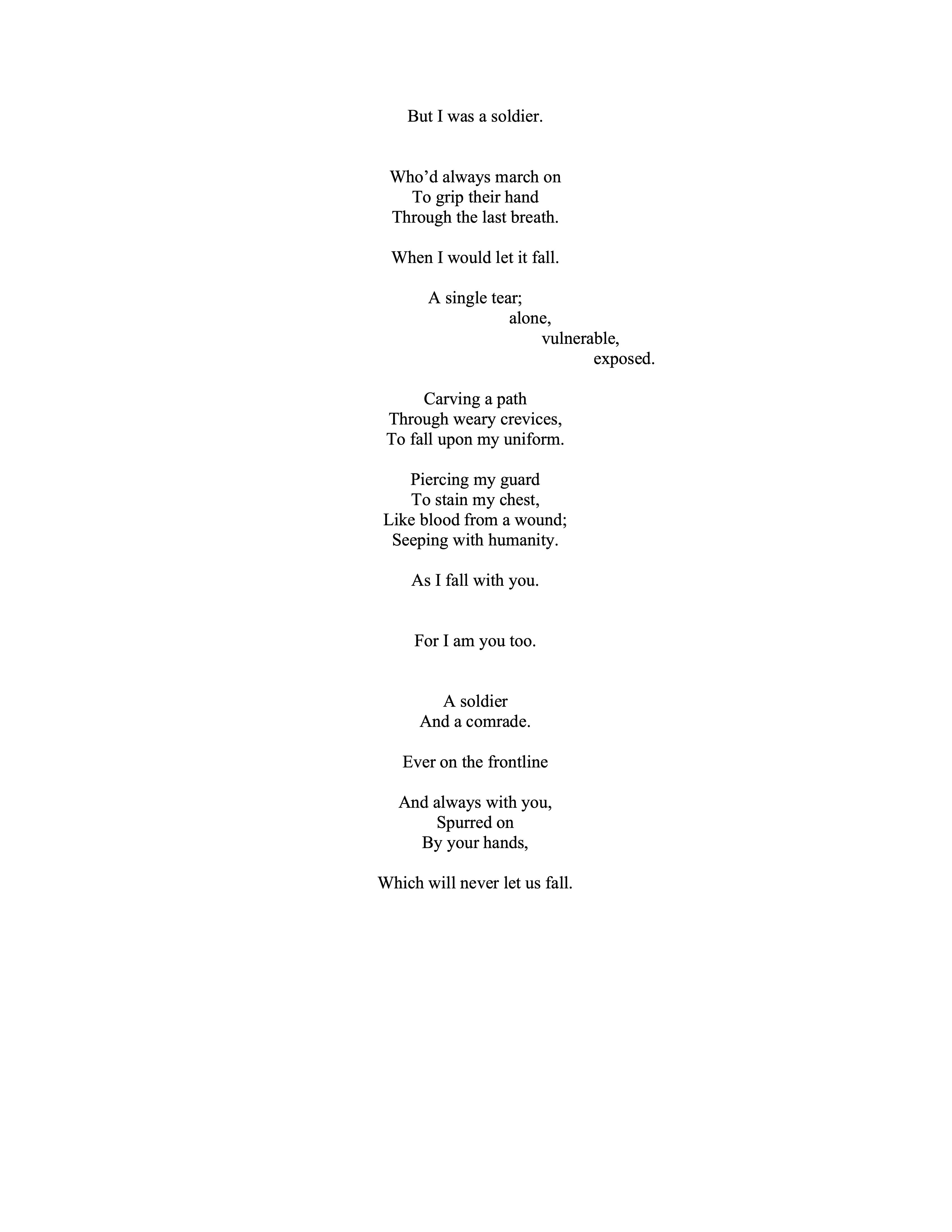
Reflection describes the simplest concepts of identity, the name you are given at birth, cultural heritage and own persona. The symbolism relative to my artistic ideas, the jasmine flowers, Arabic letters and culturally significant black stones are placed behind the portrait allowing them to ambiguously carry the essence of an identity rather than an outer persona, showcasing a glimpse beyond the veil.
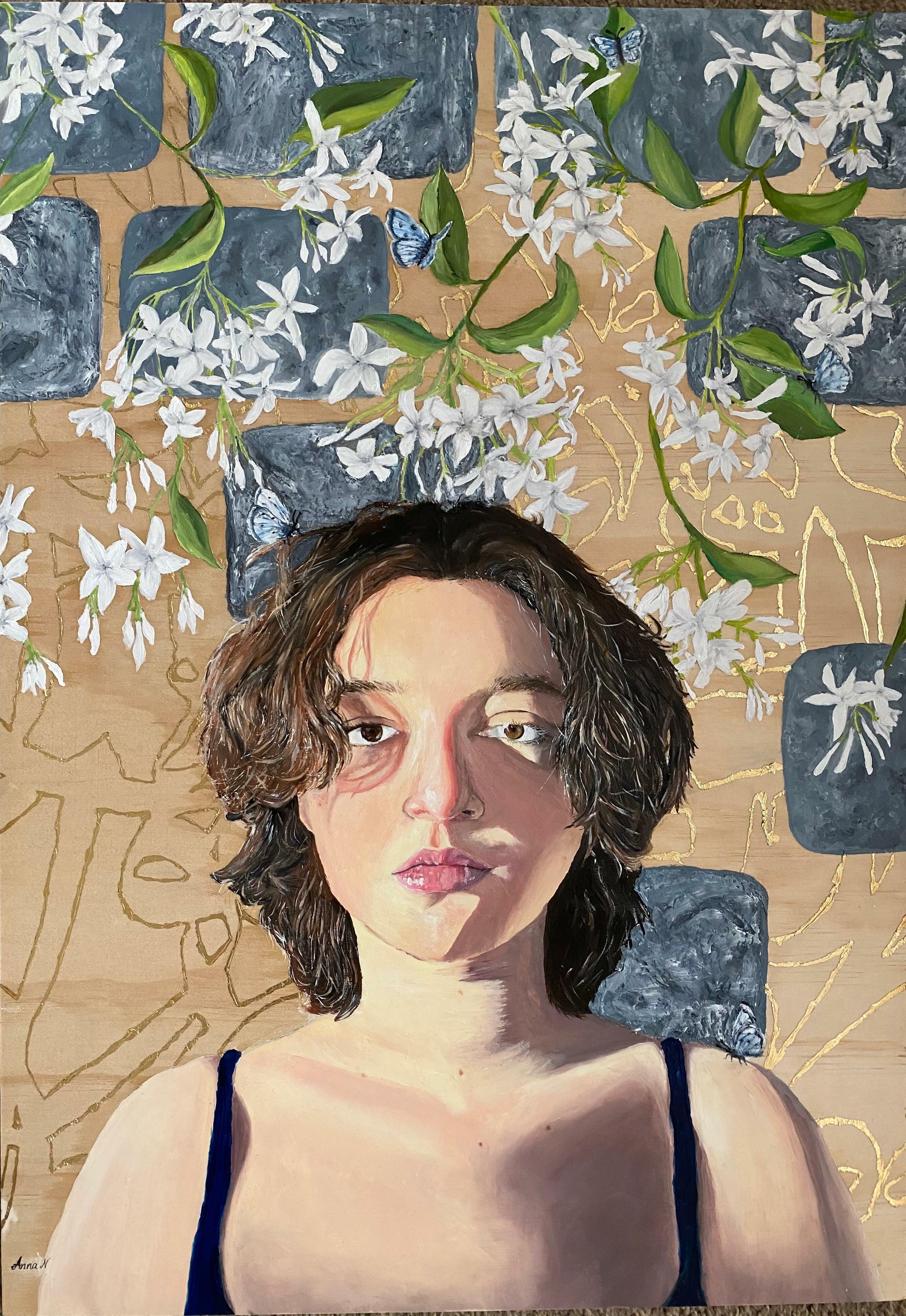
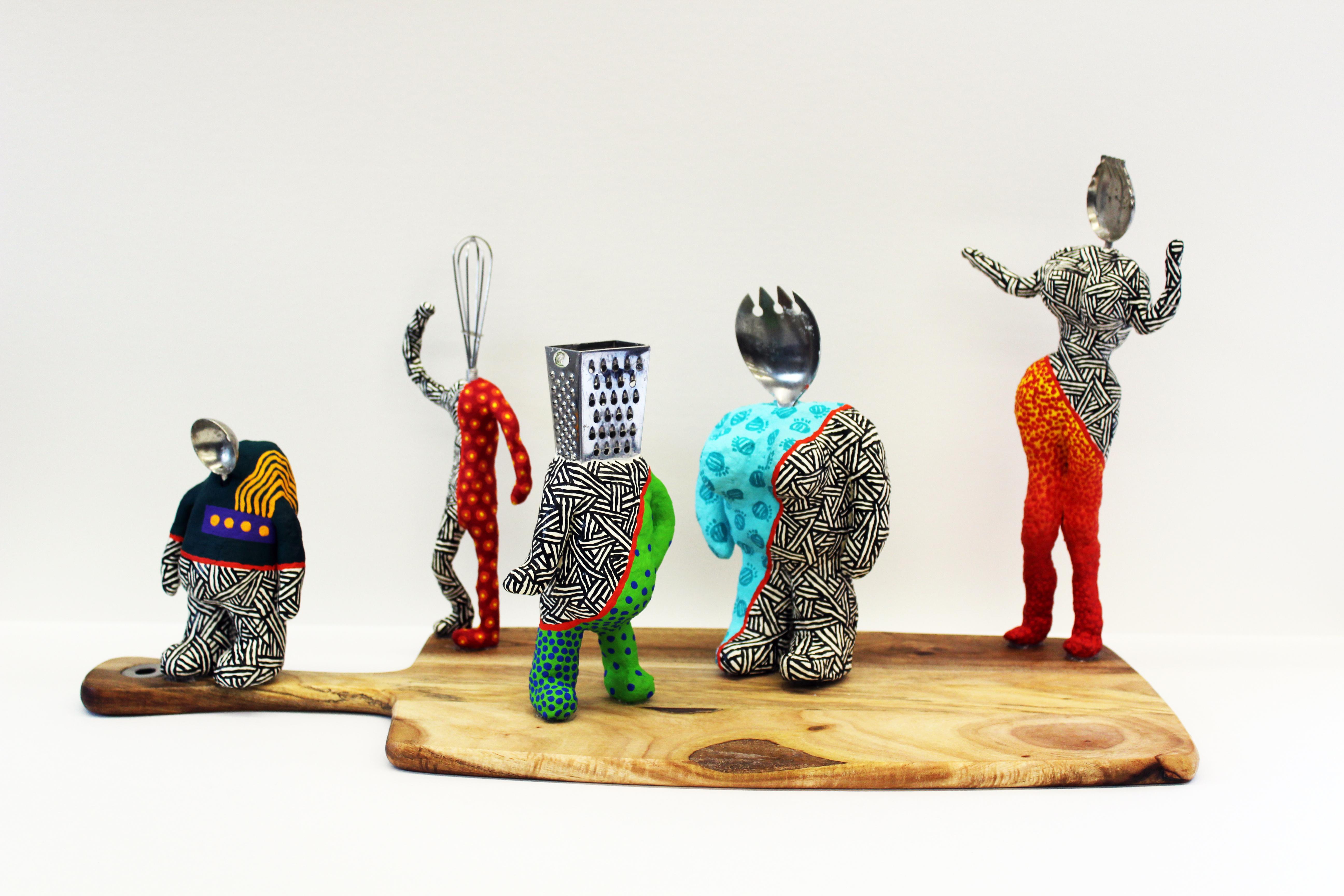
Encompassing metamorphosis, these sculptures repurpose old kitchen utensils to create something new and ‘funky’. The black and white painted pattern connects the figures, symbolising commonalities between humans despite so many differences, represented by the variety of body shapes and vibrant patterns.

"Empty Celebration" by Lois Segund Beloved
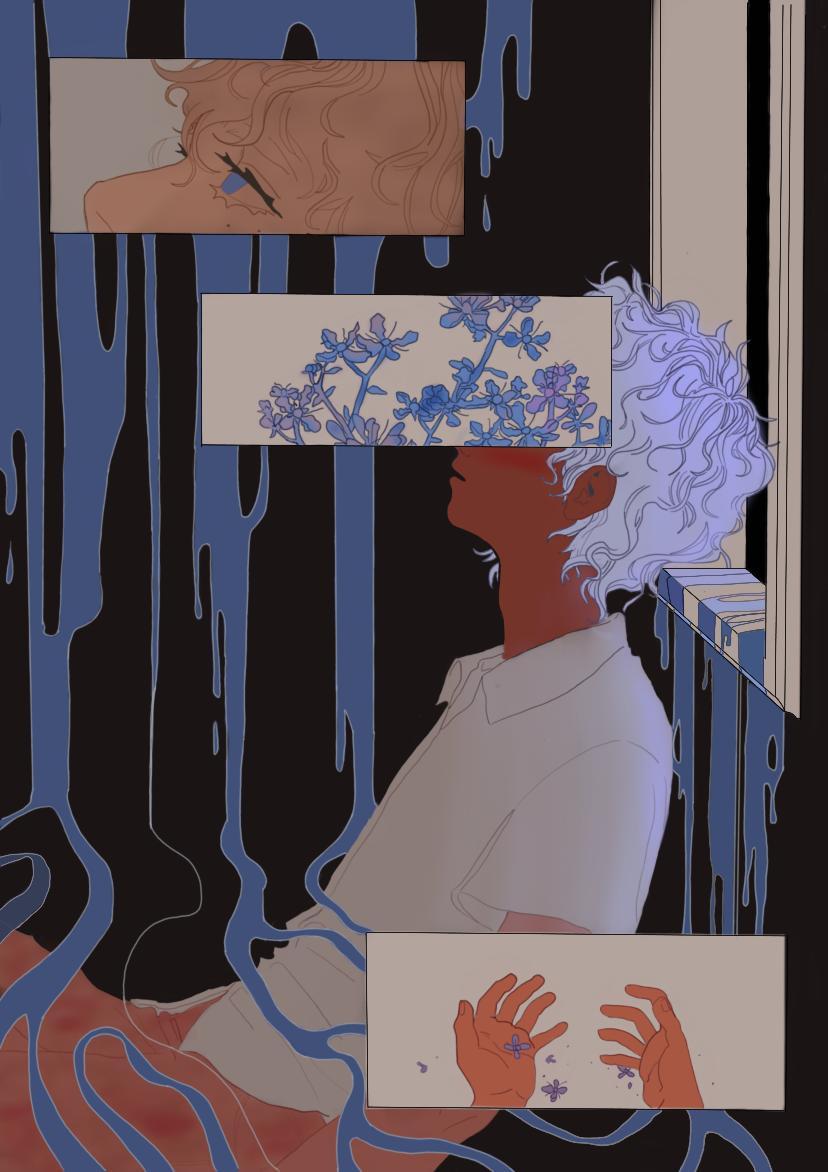
We would like to thank everyone who submitted a piece for the Auricle's Creative Writing and Visual Art Competition in 2022. The Honourable Mentions will be published in our next Edition! Thank you to our sponsor, MIPS, whose generous support made this whole competition possible.
MUMUS has also kindly donated $5 to the Indigenous Literacy Foundation for each entry into the competition.
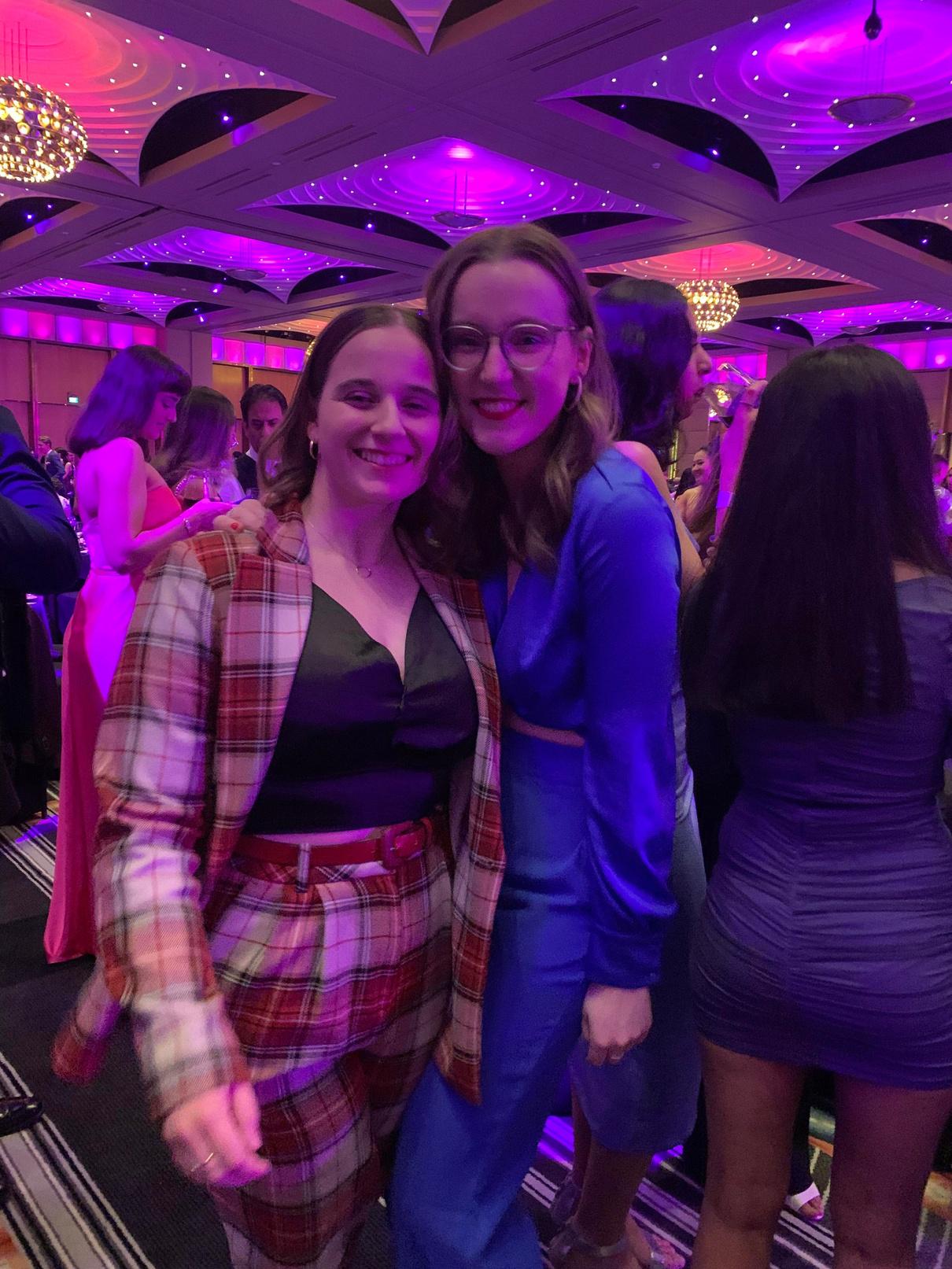
In a return to The Auricle's regular segments, in this Edition's instalment of Humans of Medicine, we spoke to Ruby Doherty and Jess McKie The brains behind the 2022 MedRevue, these two possess a creative and humourous side that shone through in two extremely successful and well received shows in August. We hope you enjoy their insights into the process of creating such a stunning performance.
First of all, congratulations on two magnificent shows! The reaction from audiences was hugely positive. You must be relieved that everything went so well?
Yes, we are very relieved! Especially after having 2 years without a show, we did feel some pressure to really come back with a bang. The audiences were fantastic, we’ve been so lucky to have had so much positive feedback about the show and we are really grateful to everyone who supported us throughout the year and came to the show. Everyone has been so kind and supportive! We want to give a big shoutout to the members of faculty that came and have reached out since, we really appreciate that they take it all in such good humour and continue to stand behind MedRevue. Their support means a lot! The entire team at every point in the process did such an amazing job and the whole committee is just so proud of the show we were able to put on
The theme for this year’s MedRevue was “The InMEDibles”. What was the inspiration for this theme?
Every year at the MedRevue AGM (which everyone should come to this year if they are keen to get involved), we have a brainstorming session for the theme for the following year’s show. We discuss many different theme options and consider possible plot lines and then everyone at the AGM gets to cast their vote.
The Incredibles was a particularly appealing theme as it was a story that lent itself to a more ensemble cast, which means that we are able to create a wider range of opportunities for more people to be involved.
The very first step is our AGM This happens at the end of every year after the show. Our AGMs have an open door policy and everyone is welcome At this meeting, we recap the show from that year, do all the boring committee things, elect the new committee and select a theme for the following year’s production. The incumbent committee then gets to work over the summer and early the following year planning the script, looking for a venue for a show, sorting out costumes, budget and all the behind-the scenes stuff.
Next, the creative holds auditions and then once we have our cast, dancers and band we set to work with rehearsals throughout the year where our creative, vocal, and musical directors as well as choreographers coordinate cast, dancers and band to bring the show to life. Meanwhile, our technical team and production team organise the theatre, ticketing, costumes, sets, marketing, promo, lighting/sound design, etc. After about a week of tech/dress rehearsals in August/September time, we then have finally put on a show. It really is a huge team effort and is so much fun to be a part of
The InMEDibles was really, really funny. What’s the secret to writing such an entertaining script?
The secret of a good script is having a strong cohesive scripting team right from the brainstorming period. Then once it’s on paper it is important to allow time in rehearsals for the cast and creative director to work together to ensure that the jokes and storyline work on stage. A big part of the comedy of MedRevue is also developed throughout this time, as the actors put their own spin on the jokes and the physical comedy is also added. This rehearsal period also allows us to get feedback from cast and crew members in all the year levels about what has happened in their year what they want to joke about and incorporating these things into the script.
Overall, we aim to make sure that the jokes are funny, understandable to a large audience, but also that the jokes are never personal or mean spirited. We focus on incorporating issues relevant to each year level, incorporating jokes that are both med and non-med related so that friends and family can also laugh even if they’re not medically inclined and we love a gentle jab at faculty every now and then.
There are so many moving parts to putting together a show like MedRevue. The script, singers, dancers, band, promotion, venue hire and all the rest! How on earth did you coordinate it all?
This would not be possible without our amazingly dedicated committee who worked very hard to put this show together. It was also helped greatly by a very strong partnership, trust and great communication between us as creative director and producer Having worked together as co-creative directors last year, we had already had a chance to develop a strong working relationship which we were able to build on further this year As creative director, Ruby was responsible for coordinating the cast, band, dancers throughout the rehearsal process, collaborating with other creative committee members and all that was necessary to bring the show to the stage Jess as our producer was responsible for coordinating
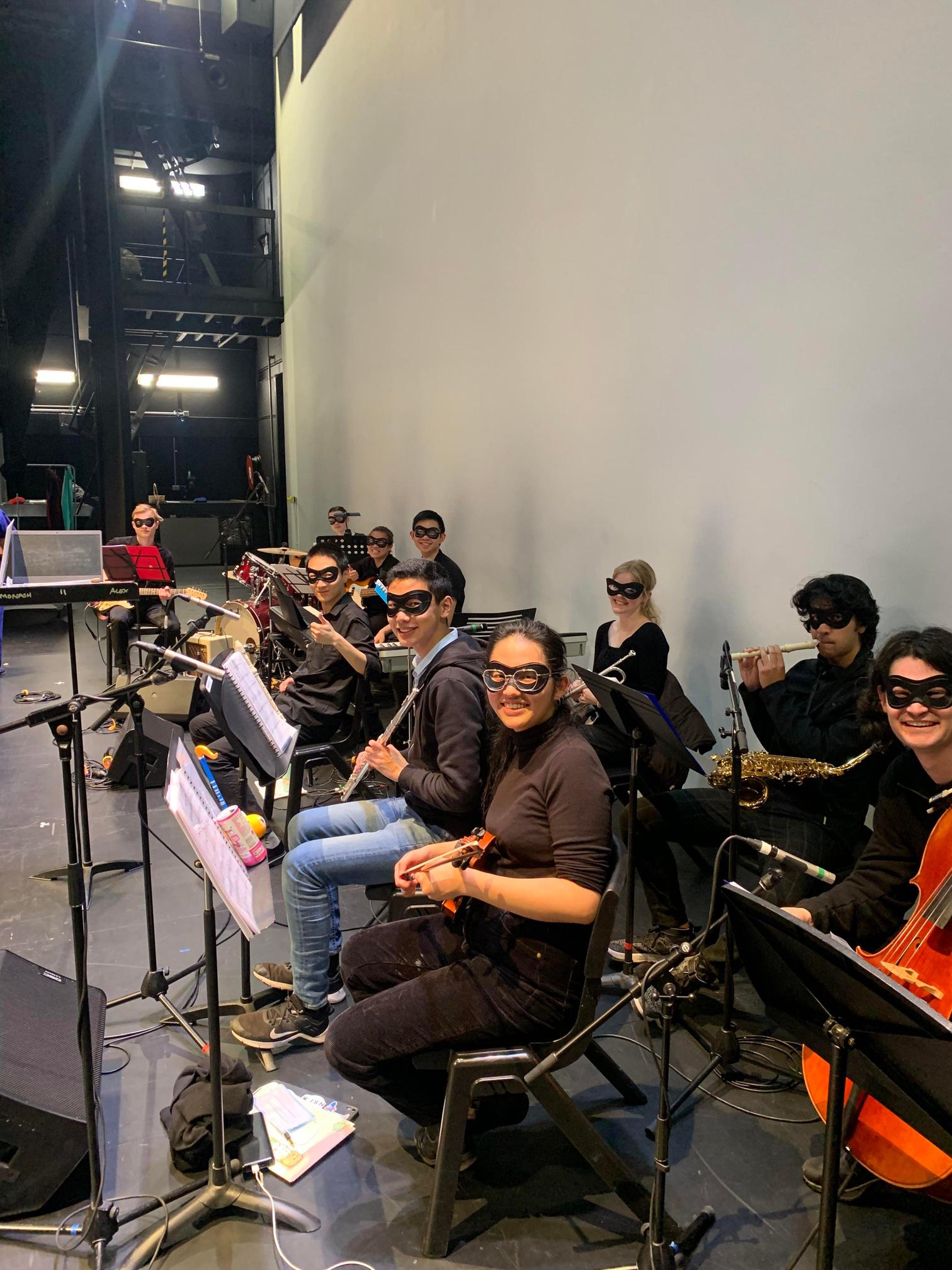
the committee and making sure everything was happening behind-the scenes in order to ensure a production could on stage with an audience. Overall, the most important thing was teamwork between all members of the production and especially our incredible committee.
Both of you were responsible for creating last year’s MedRevue as well, which unfortunately couldn’t go ahead. What was it like to put so much effort into a show that didn’t come to pass?
It was very disappointing as we were so close to our performances, with less than 2 weeks from showtime. Tickets had been sold, the show was finished and everyone had put in an incredible amount of effort. It was a great show that we were all really proud of. It was disappointing that it couldn’t go ahead and that we couldn’t reschedule for later in the year but it just became impossible due to the lockdowns, graduations, exams, etc.
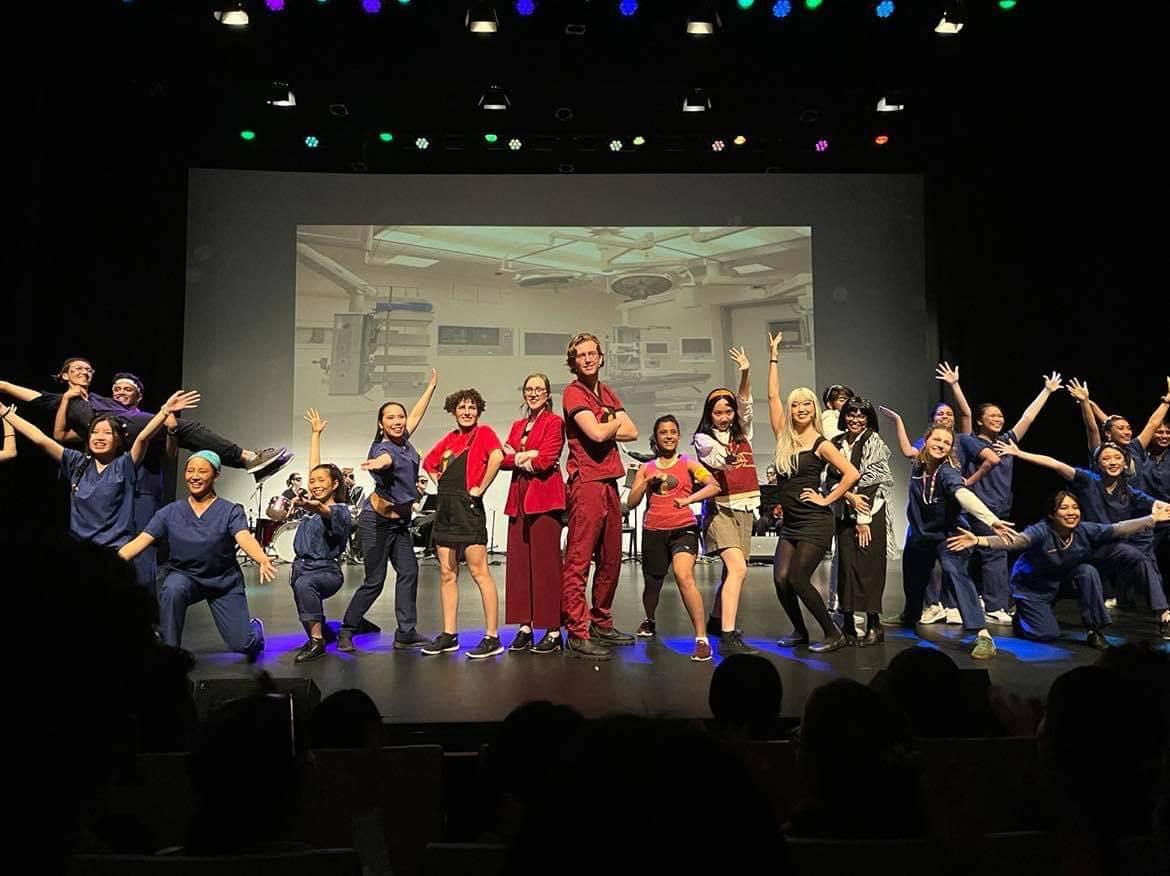
However, we had discussions with the cast and crew it was felt that we had all had the experience of doing MedRevue. Although audiences didn’t get to see it and this was disappointing, we all still had the experience of getting to know and work with one another and really engage in that creative outlet. As much as MedRevue is a performance, it is also so much more than just a 2 night event, it’s a 12 month long process between a large team of people you become close with and have a lot of fun with along with the way.
There really is something for everyone! Whether you’re someone who prefers to be on stage, offstage, play an instrument, or work behind the scenes in tech or backstage, there’s something in MedRevue for you. You don’t have to sing, dance or act or have any experience, it’s all about enthusiasm, having fun, making friends
and doing something a bit creative All we ask is that you bring yourself and your sense of humour It’s also a really great way to meet and become friends with people in other year levels and you can learn a lot from those people You really get to know the people you do MedRevue with and we are not sure there is another subcommittee that fosters connection and relationships in the same way MedRevue does, purely due to the amount of time spent working together towards a very fun common goal
MedRevue is a welcoming space for everyone Our community is very diverse and you don’t have to be massively into musical theatre to be involved, we have a very wide range of people who come to MedRevue and are involved in MedRevue and all are welcome As it’s not academic focussed, it is a more light hearted subcommittee experience, people have a lots of fun and look back on their MedRevue experience very fondly
If you are keen to know more or want to get involved please like, comment, and subscribe and stay tuned for notice about the 2022 AGM and MedRevue committee applications for the formal roles in 2023. Applications for committee roles will close on Wednesday October 19. Follow Monash MedRevue on social media, all updates with be announced on Facebook primarily.
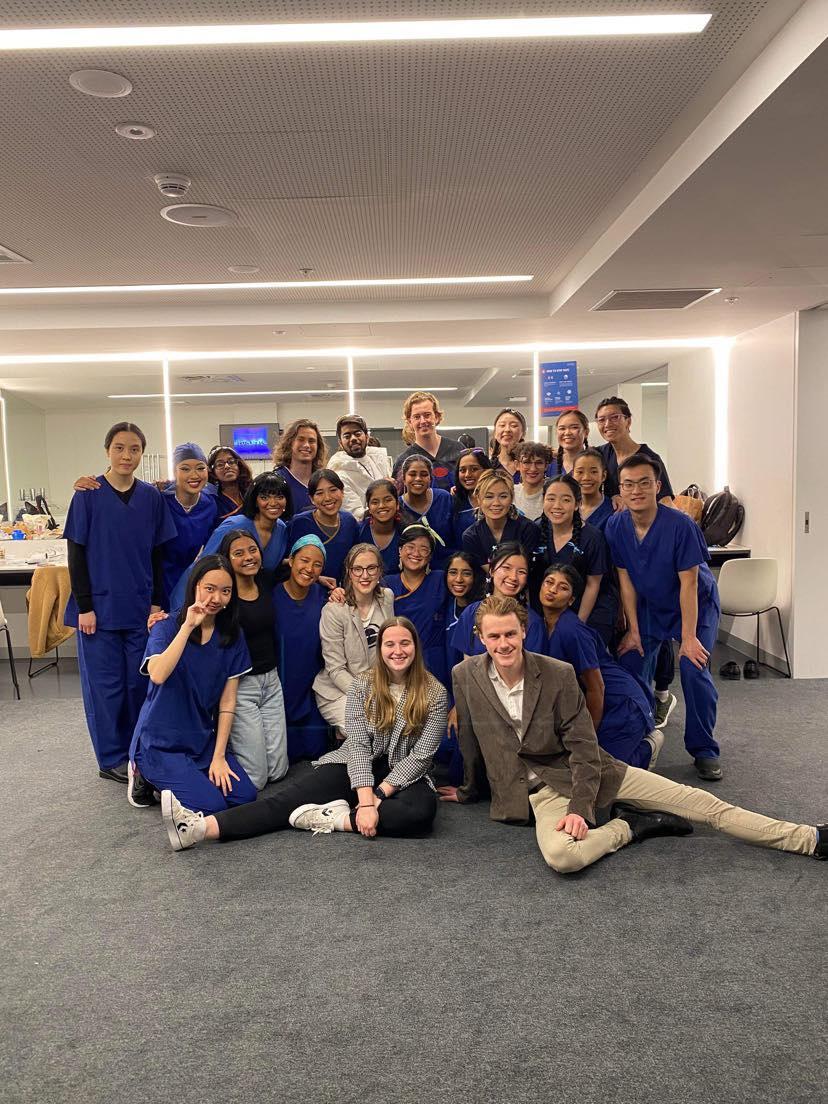
Even if you’ve never been in a MedRevue, come along to the AGM on Friday October 21. You’re not signing up or anything by coming along, you don’t have to commit to being involved, you can just come along, get the vibe, meet some of the team and dip your toe in the water.

 Writing by Shefani Perera
Writing by Shefani Perera
Our healthcare system is under pressure like never before Our GPs are overwhelmed and under resourced, our EDs are overflowing and our Ambulance services are receiving an unprecedented volume of calls that is pushing them to crisis point Triage systems are increasingly having to be more selective about how they categorise patients. Amidst this chaos, where exactly do mental health patients fall? Despite being one of our most vulnerable patient populations, people requiring mental health care are falling lower on the priority list within an increasingly saturated healthcare system
In 2021, the Royal Commission into Victoria's Mental Health System released their final report after
after a 2 year long investigation into the challenges and shortcomings of the current mental health care model. With a total of 74 recommendations for Victorian Government who is eager to implement them, this report has the potential to reset mental health care access in Victoria
In fact, since publishing the final report 12 months ago, there has already been record funding, development and reform to Mental Health services. The Mental Health Beds expansion program will see the addition of 144 new acute public mental health beds across 4 major Health services in Victoria’s Northern and Western regions. The expansion and refurbishment of the Thomas Embling Hospital, a dedicated forensic mental health
health hospital, will transform the delivery of mental health services for patients from the criminal justice system Furthermore, the capacity to provide care in a community setting is also set to increase, with the expansion of Youth Prevention and Recovery Care centres across major suburbs and regional cities These residential type centres will provide young people aged 16 to 25 with a setting for short to medium term treatment and support Additionally, there will also be a focus on providing community level care and support for women and children, with a new dedicated Women’s Prevention and Recovery Care centre as well as a new Child and Family centre for children up to age 11.
With the completion of these projects, Victoria’s healthcare system will have a greater capacity to see and manage acute psychiatric cases including emergencies and mental health crises in public hospitals Furthermore, the establishment of dedicated Prevention and Recovery Care centres for children, youth and women will ensure these populations have a safe space to recieve the necessary populations
necessary support they require without taking up acute public beds. Finally, the distribution of these beds and services to regions such as Victoria’s North, West and regional cities ensures these previously under resourced and rapidly growing areas can now deliver improved mental health care to their communities As a result, this will divert patients from services outside their catchment and indirectly increase the capacity for those existing services to further support their own communities
It is truly encouraging to see the commitment to reinvigorating mental health services across both metropolitan and regional Victoria The Victorian Government has promised to act on all 74 recommendations to ensure comprehensive and cohesive mental health care for all Victorians A revitalisation of this scale cannot happen overnight and we can expect ongoing evolution within this space.
With so much left to do, the pressing question is which areas of need will become the focus for future reform moving forward?
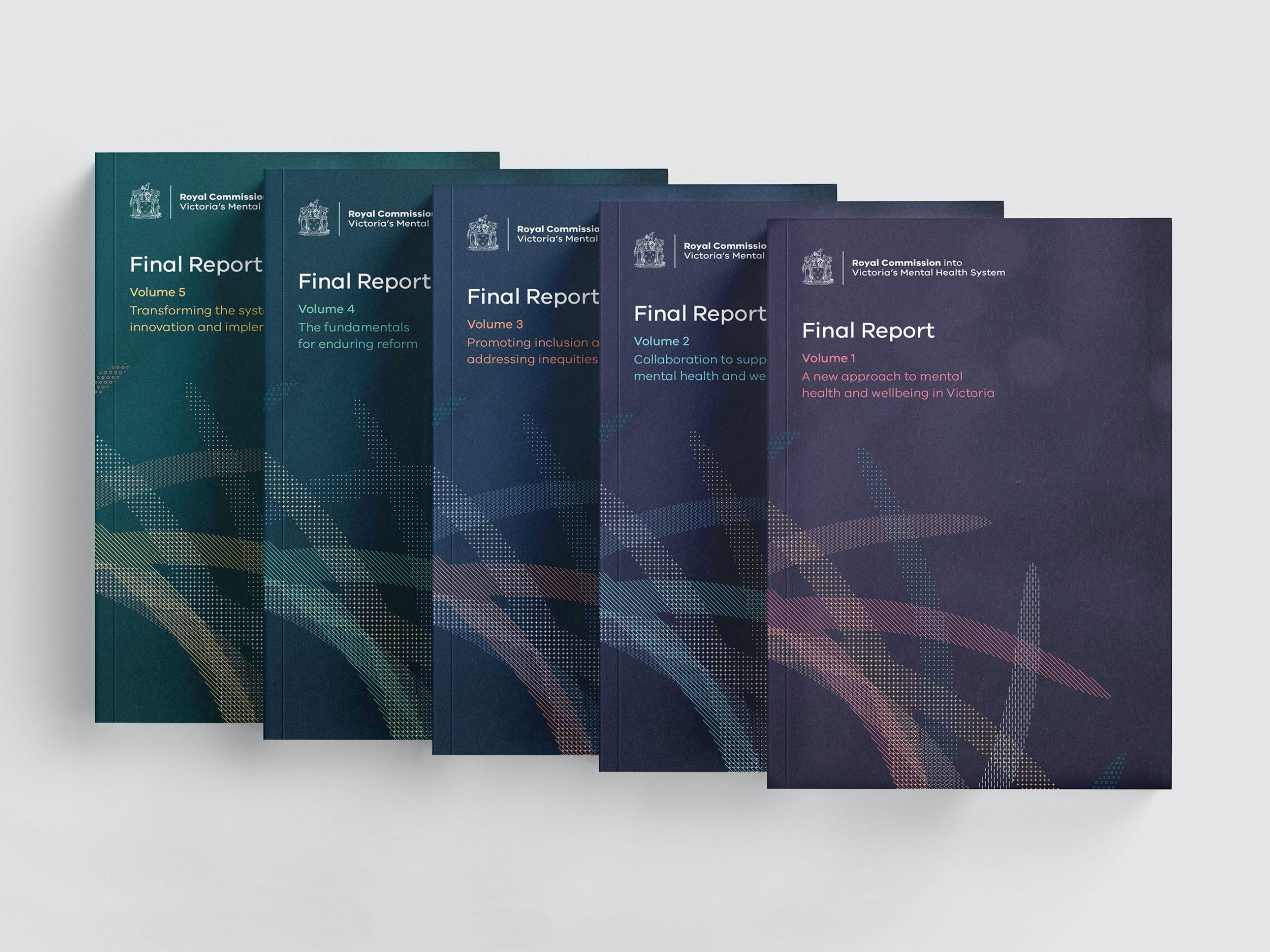 You
You
The Royal Commission’s findings identified vulnerable populations who, based on systemic and/or social limitations, are more likely to face mental illness as well as have limited access to the necessary services 14% of the health gap between Aboriginal and non Aboriginal people is attributed to poor mental health and substance use disorders Only 3 4% children and young people in Australia are Aboriginal, yet they accounted for 30% of reported suicide deaths in 2016 For Indigenous people, the concept of good health encompasses physical, mental, social and spiritual wellbeing. In order to create a safe, culturally appropriate setting for Aboriginal people to access mental health care, the protective role of culture, identity and connection to country must be acknowledged. Recommendation 33 advocates for funding towards Aboriginal Community Controlled Health Organisations to deliver culturally appropriate anad family oriented social wellbeing services to children and young people
Therefore, Recommendations 30 32 encourage both an increase in funding for these families and carers as well as establishing more comprehensive support services. This includes providing education, strengthening referral pathways and developing a state wide peer call back service for a carers in need.
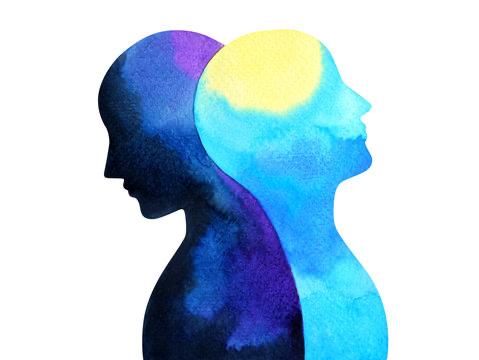
The role that families and carers play in supporting and facilitating a patient’s recovery is often underrated The arduous and at times burdensome requirements of caregiving, which are often carried over extended periods of time, can take a toll on these carers. The Royal Commission’s findings reported that there are 60,000 Victorians caring for an adult living with mental illness, with 9000 of these being young carers. Furthermore, it is estimated that these carers provide around $3.7 billion worth of care annually that is unpaid.
Building world class infrastructure with a cohesive assembly of frontline and community-based services is impractical without a strong legion of dedicated mental health care professionals. This relies on a multidisciplinary team of nursers, psychologists, psychiatrists, GPs, social workers, creative art therapists and crisis workers just to name a few. Despite the necessity for more workers in this space, recruiting and retaining a mental health care workforce has been a major obstacle in the public system. Some contributing factors include unsustainably excessive workloads, occupational abuse and burnout from vicarious trauma Additionally, the current workforce is unequally distributed between metropolitan and regional areas As a result the Royal Commission has made many recommendations including reforms to ensure adequate and equal distribution of mental health workforce throughout Victoria This involves incentives to attract workers to rural areas Recommendation 28 emphasises the necessity to give people who have lived through mental illness a role in designing and delivering the initiatives going forward. Finally, it is a right rather than a privilege to feel safe in the workplace, therefore Recommendation 59 urges the establishment of an ongoing Mental Health Workforce Wellbeing Committee to monitor and manage occupational risks.

To fix a food shortage, it is not enough to build more grocery stores and hire workers to stock the shelves and man the registers In fact it is futile unless more crops are planted and harvested to supply the demand for food Likewise, building more acute hospital beds, establishing communitybased services and hiring the required workforce is an excellent downstream solution. However, it does not address mental illness prevention nor initial access to primary services during early stages of the condition.
The Royal Commission’s findings and recommendations are a result of in-depth consultation with the key stakeholders in the area. However the role of one major healthcare body was notably overlooked General Practitioners are the backbone of our healthcare system. They are the primary providers of preventative medicine and public health education to our community. Most people will first present to their GP with their mental health concerns. Often, if the patient presents early enough, the GP is able to manage their issue themself If a referral to a specialist professional or program is required, the GP will be the one to make it
It is inevitable that a crumbling, underfunded GP system, that is also currently struggling to recruit and retain workforce, will indirectly lead to poorer mental health outcomes despite a fully functioning acute public and community based mental health system. This is because without easily accessible and affordable primary health providers, people will delay addressing their mental health concerns which will only worsen their prognosis. This will eventuate in a greater strain on frontline services like Emergency Departments as well as increase waitlist times for specialist professionals and programs.

This is not to take away credit from the wonderful and crucial work currently being undertaken. It goes without saying that Victoria’s mental health system will only benefit as each of the Royal Commission’s recommendations are instigated.
As we move towards a model that recognises and caters for the complexities of mental health care, perhaps the next goal should be to establish a much needed Royal Commission into General Practice.

Acknowledgement of supervisor: Dr Shuai Li at the Breast Cancer Unit, Centre for Epidemiology and Biostatistics, University of Melbourne. Dr Li was a brilliant and understanding supervisor and I cannot thank him enough for this opportunity.
One breast cancer risk factor is genetic variants. The most widely known germline genetic mutations that predisposes the development of breast cancer are those at the BRCA1 and BRCA2 genes The widespread knowledge of these genes is likely, in part, due to the Angelina Jolie effect. This phenomenon occurred when the actress Angelina Jolie revealed that she carried the BRCA1 mutation and chose to undergo a radical mastectomy to decrease her chance of developing breast cancer.
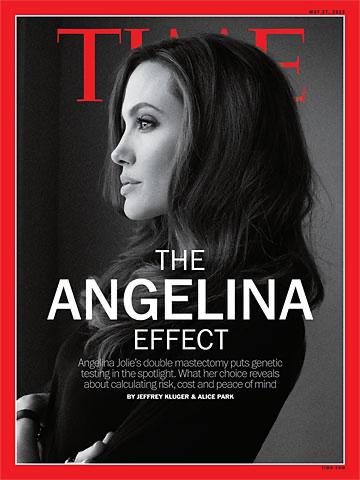
Her actions resulted in an increase in genetic testing for the BRCA1 gene by the public.
The BRCA1 genetic mutation is estimated to be present in 1 in every 500 in Australians Unfortunately, there are many other genetic mutations that have been linked to breast cancer, one of which is the CHEK2 mutation. This mutation is not as well known as the BRCA1/2 mutations, but is estimated to be more common appearing in 1.5% of the human population [Goodman 2008]
While the relationship between CHEK2 mutations and breast cancer has been studied, there is less information surrounding the effect of CHEK2 mutations on the development of other cancers This data analysis focuses on the question: How are CHEK2 mutations linked to other cancers?

Data were from the Australian Breast Cancer Family Registry. There were 1346 individuals in the original dataset with 35 probands (first individual diagnosed with breast cancer in the family)
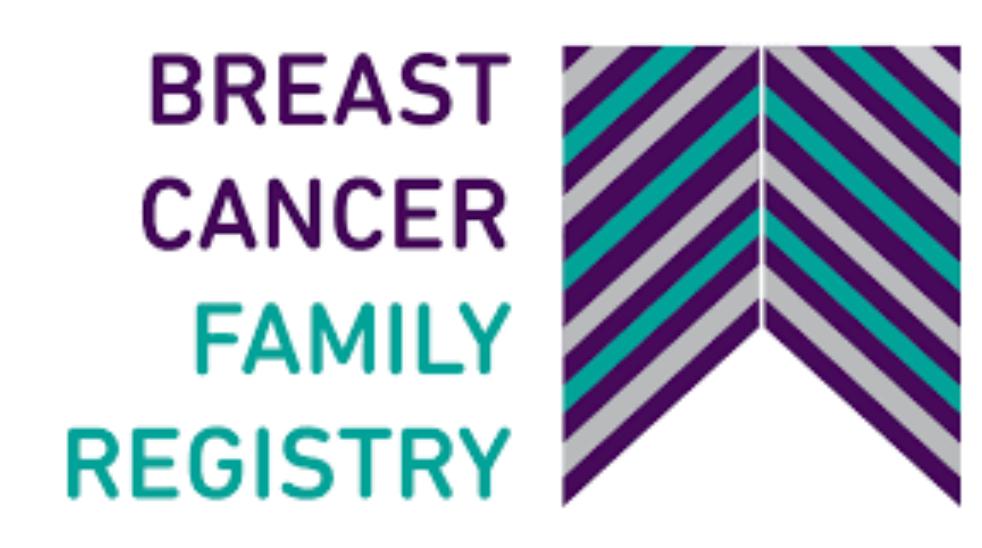
Not all were tested if they had the CHEK2 mutation if there was no genetic testing information their likelihood of having the mutation was calculated (using the clipp R package) based on their relationship to those who had been tested. The function is seen in Figure 2
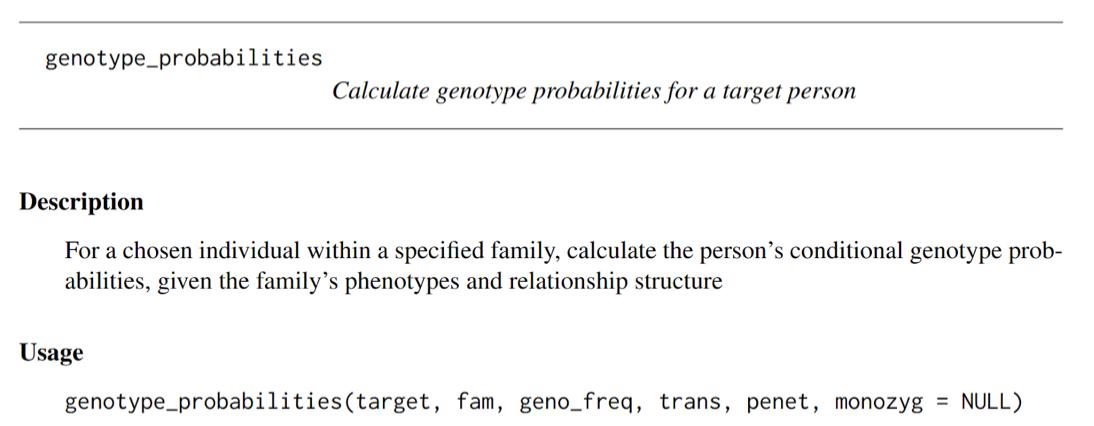
Figure 3 demonstrates the calculated frequencies of the CHEK2 mutation in the dataset.
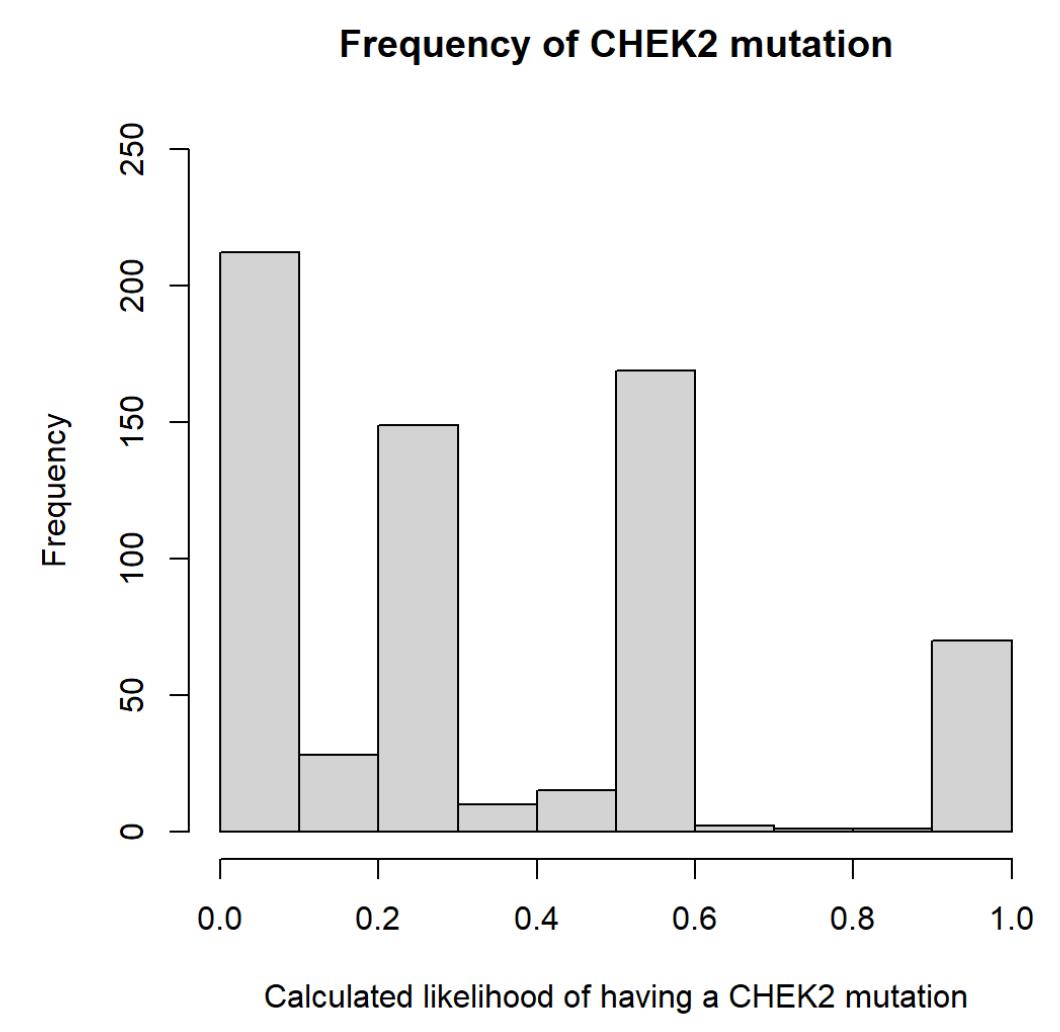
Some individuals had to be removed from the dataset for a variety of reasons. The final dataset comprised of 657 individuals, with 47 different cancers.
Survival analysis was used to determine the hazards ratio (HR), CI and p value for each cancer and group of cancers (eg stomach cancer and digestive cancers). Data was deemed statistically significant if the p value was less than 0 05.
This data analysis of the ABCFR revealed a statistically significant association between CHEK2 mutations and the development of male colon, male skin and female urinary tract cancers The full results are in the Tables 1 and 2 on the next page.
The sample size for this analysis was relatively small, and some cancers had only a few entries, leading to a low statistical power This low sample size may account for the negative association seen between the CHEK2 mutation and female genital cancers (of which there were 3 in the study), which contradicts previously established findings.
This analysis also makes the assumption that any cancers seen in patients with a CHEK2 mutation was singularly due to the CHEK2 mutation and not other mutations or carcinogens
Table 1. Individual cancers and their HR


Table 2. Groups of cancers and their HR
This data analysis can help to inform our patients of their risks to develop certain cancers, and for them to take extra steps to mitigate their cancer risk. For example, they might choose to get screened for the implicated cancers more frequently, or make more effort to avoid risk factors for those cancers.
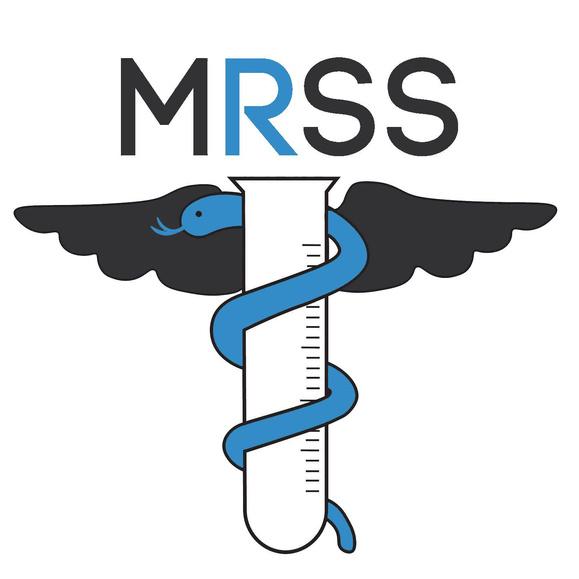
Hasna Kazi is a preclinical representative on the committee of the Medical Research Students Society.
Chapter 9 The Cell Cycle and Cancer, Editor(s): Steven R. Goodman, Medical Cell Biology (Third Edition), Academic Press, 2008, Pages 273 289,ISBN 9780123704580, https://doi org/10 1016/B978 0 12 370458 0 50014 1 (https://www sciencedirect com/science/article/pii/B9780123704580500141)

RUOK?
Three Simple. Words.
I smile. I nod. I look them in the eye.
I am confident and assured in my movements As I wave away their question with a laugh.
I am ok because it’s easier
In a world where perfection is the standard; In a world that will leave you behind if you don’t keep going; In a world where everyone hides their own struggles
I am ok because that’s the status quo
I continue with my day, months, years; My heart forever burning harder and harder But firewood is finite. I’ll make it last.
I am ok because I force myself to be
I look in the mirror once I’m home. How many mirrors around this world Know the truth?
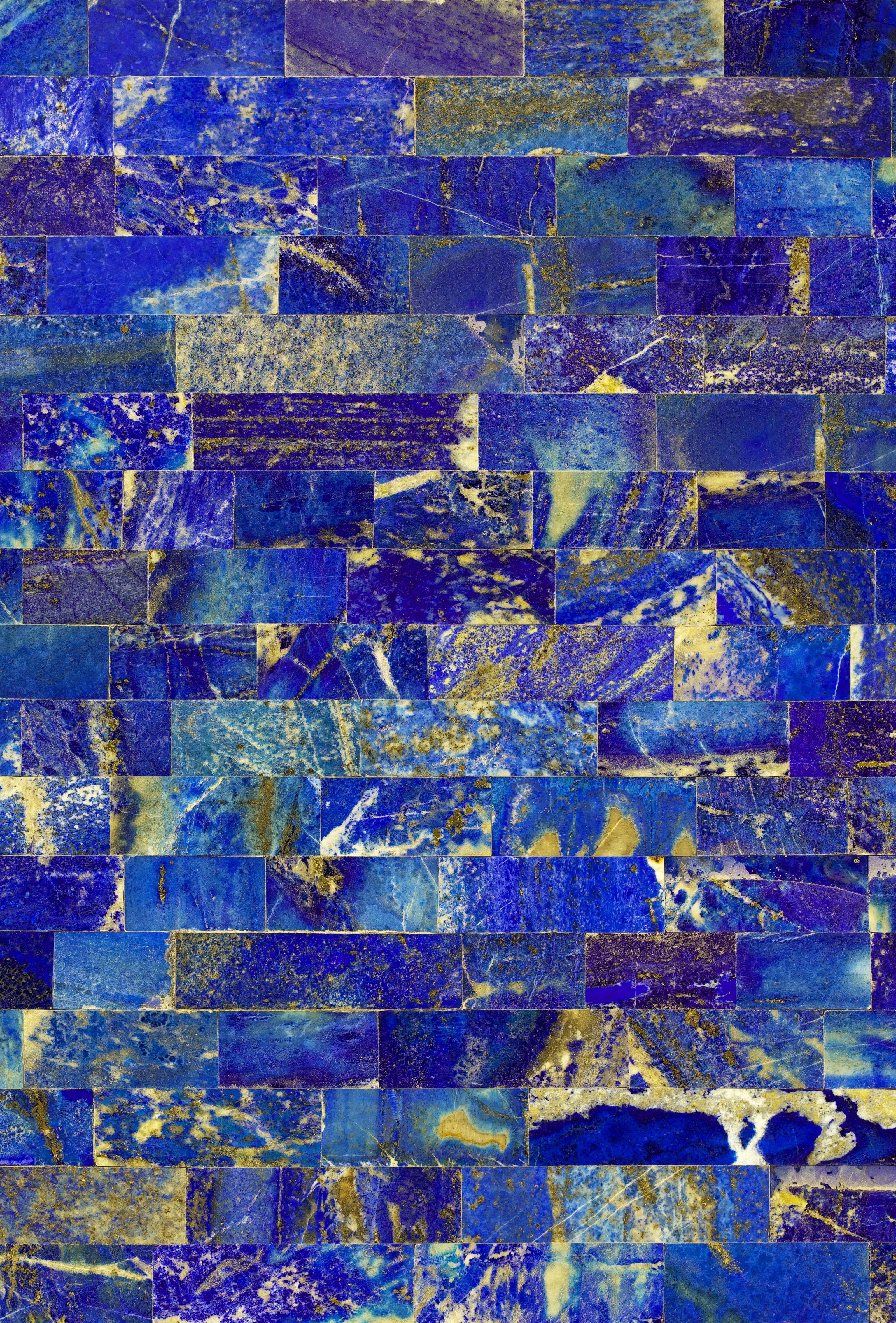
I am not ok...but I am not alone.
Three Simple Words that are not so simple
RUOK? A poem, by Virginia Su from Community and Wellbeing